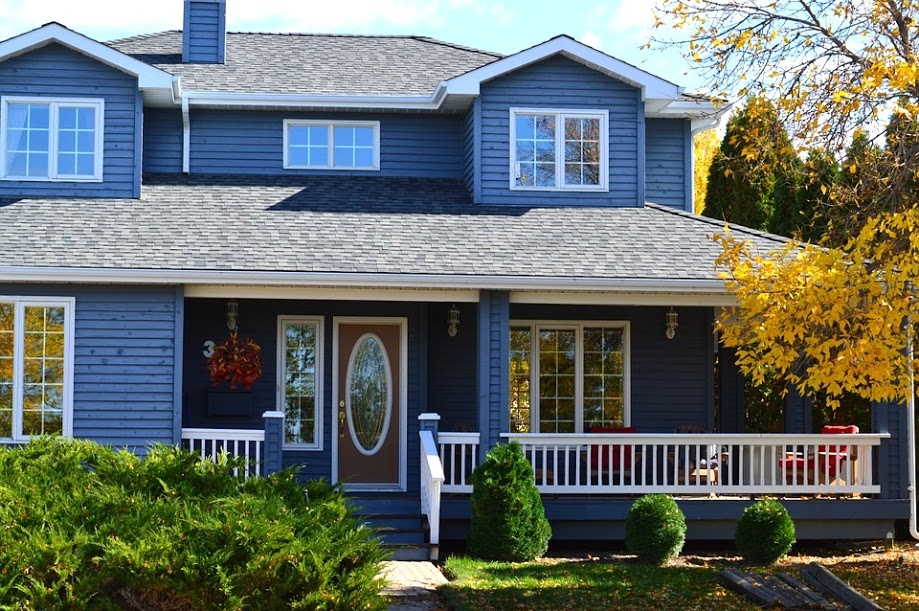Make Small Living Spaces Feel Bigger

Does household clutter drive you nuts? Don’t fret. There are ways to declutter and make small living spaces feel bigger! Below are nine tips to help you make the most out of small spaces.
Nine Tips to Declutter
- Weed out the extras. A yard sale will alleviate some clutter, and a trip to the local Goodwill will help even more. An articleby Dave Ramsey says that a good rule of thumb to follow is: if you don’t use it or wear it regularly and if you haven’t needed it in a year, then let it go. Sort through your home and make three basic categories: Keep, Sell, and Trash.
- Bookcases are for more than books! Your walls are vertical friends for storage. Use a bookshelf for plants, valuables, artwork, and more. Place items that you don’t access every day on the top shelves and use boxes to store old letters or loose pictures.
- Don’t pile it, hang it! Hanging items to help with storage issues is especially true in kitchens, where you can use pot racks, hanging baskets, and even wall-mounted shelving units to raise things and help the room feel bigger.
- Maximize cabinets and closets with organizers. Take advantage of great hardware out there to tune up the interior of your cabinets and closets. Inefficient use of cabinets for storage can easily waste more than 30% of usable “hidden” space.
- Go below. A raised bed is a great way to free up storage space equal to your bed’s square footage. Using baskets and drawers can ensure the below-the-bed storage remains tidy as well.
- Paint light. Dark walls make small rooms feel smaller. Those rooms that feel a little too close for comfort can feel bigger and brighter with a fresh coat of light-colored paint.
- Elevate shelving above the toilet tank. If you have shelves elsewhere, but the space above your toilet tank is empty, consider relocating high shelving to above the “dead space” behind the toilet. Consolidating this used space into a single area can broaden out the rest of the bathroom.
- Use multifunctional furniture. Options for multifunctional furniture include using a sofa with pullout storage space, an ottoman that opens for extra storage, or a steamer trunk that can double as a coffee or end table. The Family Handyman gives tips on incorporating multifunctional furniture in small rooms.
- Utilize the space above your door. If you are working to make a small bathroom feel more significant, there are many options. When transforming your small bathroom into a larger-feeling space, you need to add storage. Life Storage provides an idea for that additional storage. You can store extra toilet paper, towels, or other products by adding a shelf above your door. With this storage being above eye level, it will still provide you with open spacious bathroom space.
Organization and smart storage can turn a tiny home into a cozy abode.
Of course, if you’re ready to upgrade your home rather than squeeze the last few inches out of your existing space, get in touch! I’d be happy to help you search for a new home today – Christina Chintis (602) 799-1979!
Horse Properties For Sale in Prescott

Horses Love Prescott
Not only does Prescott offer miles and miles of trails for you and your horse to enjoy, but it also offers an incredible variety of equestrian communities and properties to give your horse a beautiful place to call home.
Below is information on some of the equestrian communities in the Prescott area. Although this isn’t an exhaustive list, there are numerous areas with horse properties in the quad cities of Prescott, Prescott Valley, Chino Valley, and Dewey-Humboldt.
Prescott Prairie, Prescott Valley
Prescott Prairie in Prescott Valley, Arizona, is located on the north side of the Coyote Springs community near the base of Mingus Mountain. Prescott Prairie offers a peaceful country lifestyle with all the amenities of city life. This upscale community provides newer custom site-built homes. The minimum acreage in this community is 2 acres, so you have lots of room for horses, gardening, or a guest home. This community offers upscale homes on 2 acres with a peaceful country lifestyle. This rural community is located only a few miles from schools, shopping, and dining in Prescott Valley.
There are still multiple lots left to choose from for you to build your dream home. The tremendous mountain views, paved streets, and underground utilities are just a few of the reasons why people fall in love with Prescott Prairie.
Prescott Ridge, Prescott Valley
One of the premier locations in the Prescott Valley area is the gated community of Prescott Ridge. This development features 10 to 54-acre parcels covered by various vegetation, including juniper trees and pinon pines.
Prescott Ridge is a fantastic location for horse owners or someone searching for that little piece of paradise for their new home. This upscale gated community also offers underground utilities and paved roads, value protecting CC&R’s, along with horse privileges.
American Ranch, Prescott
American Ranch is a prestigious community located just a few miles north of Prescott in the Williamson Valley corridor. This popular World Class Master Planned Equestrian Community neighbors the Prescott National Forest. There are approximately 240 homesites in the American Ranch community.
Homes are custom built, and they take advantage of the breathtaking mountain views, sitting on 1 to 5-acre parcels. Residents enjoy a $3 million Equestrian Center, fitness/exercise center, outdoor heated pool, spa, tennis, basketball, and a catch and release bass fishing lake.
Coyote Springs, Prescott Valley
The Coyote Springs Corridor is the section on the north side of 89A on the north side of Prescott Valley. This corridor is a rural area, with the average lot ranging from 2 acres up to 10 acres. Homes in the Coyote Springs Corridor are within minutes of schools, shopping, the Prescott Valley Event Center, and the new Yavapai Regional Medical Center East Campus.
The Coyote Springs corridor included: Coyote Springs, Mingus Meadows, Prescott Prairie, Antelope Meadows, and Poquito Valley.
Give me a call for more information
on finding the perfect horse property in Prescott!
(602) 799-1979
Nine Tips for Maximizing Small Living Spaces

Does household clutter drive you nuts? Don’t fret. There are ways to declutter and make small living spaces feel bigger! Below are nine tips to help you make the most out of small spaces.
Nine Tips to Declutter
- Weed out the extras. A yard sale will alleviate some clutter, and a trip to the local Goodwill will help even more. An article by Dave Ramsey says that a good rule of thumb to follow is: if you don’t use it or wear it regularly and if you haven’t needed it in a year, then let it go. Sort through your home and make three basic categories: Keep, Sell, and Trash.
- Bookcases are for more than books! Your walls are vertical friends for storage. Use a bookshelf for plants, valuables, artwork, and more. Place items that you don’t access every day on the top shelves and use boxes to store old letters or loose pictures.
- Don’t pile it, hang it! Hanging items to help with storage issues is especially true in kitchens, where you can use pot racks, hanging baskets, and even wall-mounted shelving units to raise things and help the room feel bigger.
- Maximize cabinets and closets with organizers. Take advantage of great hardware out there to tune up the interior of your cabinets and closets. Inefficient use of cabinets for storage can easily waste more than 30% of usable “hidden” space.
- Go below. A raised bed is a great way to free up storage space equal to your bed’s square footage. Using baskets and drawers can ensure the below-the-bed storage remains tidy as well.
- Paint light. Dark walls make small rooms feel smaller. Those rooms that feel a little too close for comfort can feel bigger and brighter with a fresh coat of light-colored paint.
- Elevate shelving above the toilet tank. If you have shelves elsewhere, but the space above your toilet tank is empty, consider relocating high shelving to above the “dead space” behind the toilet. Consolidating this used space into a single area can broaden out the rest of the bathroom.
- Use multifunctional furniture. Options for multifunctional furniture include using a sofa with pullout storage space, an ottoman that opens for extra storage, or a steamer trunk that can double as a coffee or end table. The Family Handyman gives tips on incorporating multifunctional furniture in small rooms.
- Utilize the space above your door. If you are working to make a small bathroom feel more significant, there are many options. When transforming your small bathroom into a larger-feeling space, you need to add storage. Life Storage provides an idea for that additional storage. You can store extra toilet paper, towels, or other products by adding a shelf above your door. With this storage being above eye level, it will still provide you with open spacious bathroom space.
Organization and smart storage can turn a tiny home into a cozy abode.
Of course, if you’re ready to upgrade your home rather than squeeze the last few inches out of your existing space, get in touch! I’d be happy to help you search for a new home today.
Christina Chintis
(602-799-1979
The Difference Between Market and Assessed Value

“What’s my home worth?”
Even if you are not in the market to sell your house, your home is a sizeable investment, and it is natural to ask the question: What is my home worth?
The question of “home value” can be answered in three different ways.
- Ask your public tax assessor, and you’ll get one number. This number is typically low.
- Look up your house on Zillow and get a Zestimate, and you’ll get another number. This number is typically inflated and is too high.
- The third answer is market value.
Market Value is the value your house should sell for, typically within 30 to 90 days.
Many people are confused about assessed value versus market value. The assessed value is a number placed on a property by a public tax assessor to calculate the property taxes you pay on your home each year. Depending on your area’s tax rate, the assessed value determines your annual tax bill. The assessment rules vary, but typically the assessed value has more to do with how much money the municipality needs to raise than it does the number you’d arrive at after putting your home on the market.
Assessed values are only adjusted annually and can lag behind actual market values in both directions. They can also vary widely from home to home in the same neighborhood, especially if a neighbor has appealed an assessment (usually to lower their tax bill). In case you were wondering, assessed values don’t automatically adjust for you when someone else appeals their assessment.
Market value is the price at which a specific house, typically within 30 to 90 days, in a particular location in its current condition will sell. Your real estate agent will try and predict your home’s market value based on all of these factors. If you live in a hot neighborhood, your home value can be elevated. If you have significant repairs to do or other condition issues, your market value can be lower. The number one reason a home doesn’t sell is often related to a disparity between the listing price and actual market value. (Overbidding occurs when a home is priced below market value.)
Generally, assessed value tends to be below market value. Sometimes a buyer will attempt to negotiate a lower price on a home by citing assessed value, but this only underscores their lack of understanding about assessed value versus market value.
Strategies for Countering Lowball Offers

When selling your home, you may run into an offer, or a lowball offer, that fall far below your asking price. These low offers may only serve to make you angry, but don’t get angry! While selling your home is an emotional process, there are rational and effective strategies for dealing with the lowball offer. Sometimes the lowball offer can even turn into the right price if you handle negotiations the right way.
- Remain calm. Although your first reaction to a lowball offer may be anger or disgust, take a breath and remain calm. There is nothing to gain in making enemies.
- Understand that sometimes buyers aren’t familiar with actual market value. They may be from somewhere where homes are much less expensive, or they could be first-time buyers who have been counseled by friends and family to start with lowball offers.
- Have your agent communicate that while you’re happy to work with them as buyers, you’ll need an offer that is somewhat more competitive and at a level you could consider seriously. When responding, remember that “you can catch more flies with sugar and honey than with vinegar.”
- Consider countering for a small amount off your asking price to signal your willingness to negotiate, but reiterate that you will need to hear something more in line with market value to continue negotiations.
- Alternately, if you are in a hurry to sell, counter with your rock-bottom offer. This number may not be close to their lowball, but it could be substantially less than your listing price. This may make the lowball buyer suddenly reconsider their position, tempted by the opportunity to purchase the property at what they consider to be a “substantial discount.”
- Ask the buyer to justify their price. If they genuinely believe their offer is genuine and fair, they should be able to point to reasons why your listing price is inflated. Make them show their homework. If they haven’t done it, you’ll know soon enough.
- Don’t fall for the “but we can’t afford more” pity play. Sympathize with their financial situation, but in no way let it sway you from the true value of your home.
To steer clear of lowball offers, don’t appear desperate. In your home’s descriptions, you may have listed yourself as a “motivated” seller. This will open yourself up to buyers believing that they can get away with purchasing your home for a discount.
Of course, sometimes, a stream of lowball offers can indicate that the home is priced too high. Occasionally agents will “buy the listing” by assuring sellers they can get the higher price, only to take a lower offer much later down the line. It’s not a sound strategy that I would recommend. If you’re looking for the fair market value of your home, get in touch with me today.


 Facebook
Facebook
 X
X
 Pinterest
Pinterest
 Copy Link
Copy Link






